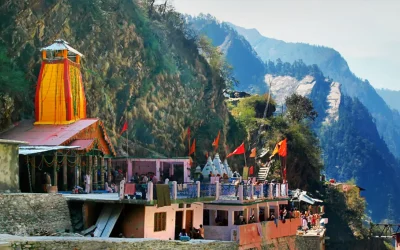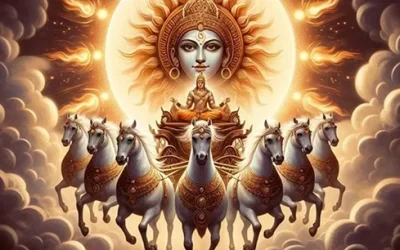A Journey Through Spirituality, History, and Culture
Aranmula Parthasarathy Temple
Situated in the peaceful village of Aranmula in the Pathanamthitta District, Kerala, this is one of South India’s most sacred temples dedicated to Krishna, where the presiding deity Lord Krishna is worshipped in the form of Parthasarathy, the charioteer of the Pandava prince Arjuna in the epic Mahabharata. It is an elaboration of spirituality and tradition encapsulated in architectural brilliance. As one of the 108 Divya Desams, this temple is highly significant to the Vaishnavites and has an association with the rich legends of the Mahabharata. Whether you are a pilgrim or a history enthusiast, the unique temple architecture of the Aranmula Parthasarathy Temple offers a profoundly enriching experience.
History of Aranmula Parthasarathy Temple
The temple is said to have been constructed after the Kurukshetra war by the Pandava princes. Legend has it that each of the Pandavas built temples for Lord Krishna, and Aranmula’s temple was Arjuna’s act of contrition after killing Karna when he was unarmed. The temple is situated on the banks of the holy Pamba River, which is said to have been chosen based on its serenity and sanctity.
The mythological origin of the temple is as captivating as its purificatory purpose. According to belief, the image of the idol was brought to this place on a raft made of bamboo, and the village took the name “Aranmula, which in Malayalam refers to “six pieces of bamboo.” With time, the temple became an abode of various festivals, rituals, and myths; thereby, it rendered itself to be one of the most important pilgrimages.
Architecture
Indeed, the Aranmula Parthasarathy Temple exemplifies Kerala’s classical architecture. The temple is approached by climbing 18 steps on its eastern side, or 57 steps from the northern entrance leading directly to the Pamba River. In the sanctum sanctorum (Sreekovil), there is a 6-foot statue of Lord Krishna in his fierce Vishvarupa form, in which he appeared before Arjuna, revealing cosmic form during the Mahabharata war. None of the idols of Krishna temples in Kerala is as gigantic as this one, which further adds to the spirit of the temple.

The main outer walls, termed Kshetra-Madilluka, enclose the central sanctum and are studded with ancient lamps known as Vilakkumaadam, lit during festival days, forming a spectacular view. The Dwajasthambam flagpole and Deepastamba light post stand alongside the temple.
Inside the temple is Namaskara Mandapam, a raised platform to offer one’s prayers. On top of the conical roof that forms the terracotta tiles, an artistic beauty takes its page. The scenes from Ramayana and Mahabharata have been narrated on the 18th-century mural paintings decorating the walls of the temple. Wooden pillars and stucco carvings indicate how careful craftsmanship was in building this sacred place.
Religious and Cultural Significance
Aranmula Parthasarathy Temple has a significant place in Kerala’s religious and cultural life. The Lord Krishna, in his Parthasarathy form, is believed to be the protector and the giver of food, that is, Annadana Prabhu, and it is believed that anyone who performs the Annaprashana (a child’s first feeding of rice) here will never face poverty.
It is one of the stops for the sacred procession of the Thiruvabharanam (sacred jewels of Lord Ayyappan) on its way to Sabarimala. Additionally, it accommodates the golden outfit, called Thanka Anki, by the Travancore king, which has been shifted to Sabarimala in December as part of the Mandala season.
It is sacred where the annual Aranmula Vallam Kali, or snake boat race, takes place during the Onam festival. Unlike any other sporting event, this is a devout offering to Lord Krishna. Majestic snake boats, the Palliyodams, race along the Pamba River to celebrate the Vallasadya festival feast fit for devotees.
Distinct Rituals and Festivals
The Aranmula Parthasarathy Temple is known for the festivals and rituals performed here, many rooted in local legends and history.
- Ashtami Rohini: The day is marked to be the birthday of Lord Krishna and it is celebrated with lavish feasting in the form of Vallasadya, one of the largest vegetarian feasts in the world, comprising 64 dishes. On this festival, the snake boat race is also an integral part as elaborately decorated boats glide over the Pamba River accompanied with traditional songs and music. Devotees even worship these boats as believed vehicles of deity.
- Khandavanadahanam: This festival, celebrated during the Malayalam month of Dhanu, re-enacts the burning of the Khandava forest from the Mahabharata. Devotees carried it out by using dried leaves and plants, which, in turn, were put to fire to symbolize this particular ritual.
- Utsavam: The annual ten-day festival of the temple during the month of Makara between January and February is an elaborate affair in which the deity is taken out in processions mounted on Garuda, the vehicle of Lord Vishnu. It is said that all 33 million gods are present to catch Lord Krishna’s glimpse during this procession.
These festivals attract thousands of devotees and tourists, making the temple a space of religion and culture in Kerala.
Aranmula Vallam Kali -The Snake Boat Race
The most renowned festival in the temple is the Aranmula Vallam Kali – the traditional snake boat race that takes place along the Pamba river on the occasion of Onam festival. The race has a huge attraction and remains closely associated with the history of the temple. It is said that once, Arjuna, one of the Pandavas, had been saved by a poor man with a bamboo raft while crossing the Pamba River, and it made him establish the Aranmula temple.
The race boats are 100 feet long and are equipped with more than 100 rowers and are accompanied by musicians and singers. The rhythmic movement of the boats is a treat to the eyes and a spiritual outing for the devotees. After the race, devotees partake in a grand feast at the temple, which is part of the Vallasadya tradition.
A visit to the Aranmula Parthasarathy Temple is religiously enriching and culturally attesting. The temple remains open from 4 AM to 11 AM and from 5 PM to 8 PM.

How to Reach
By Air: The nearest airports to reach here include the Cochin International Airport at a distance of 124 km, and Trivandrum International Airport, which is 116 km away. Taxi services and buses are available from the airports to the temple.
By Train: Chengannur railway station is the nearest one to the temple, which is 11 km from the temple. Local transport facilities like buses and taxis are available at this station.
By Road: The state transport and private buses connecting Aranmula to significant cities in the area around Chengannur, Pathanamthitta, and Pandalam are easily accessible.
The Aranmula Parthasarathy Temple is a beautiful combination of history, spirituality, and tradition. This includes the beauty of its architectural designs as well as ancient wall paintings, as well as the strong cultural and religious bond with the Mahabharata and Lord Krishna. Aranmula Parthasarathy Temple is a must-visit for anyone reaching out to explore the spiritual heart of Kerala.






